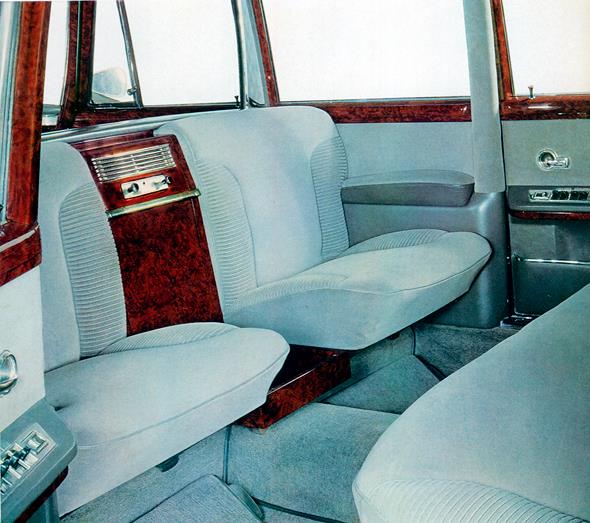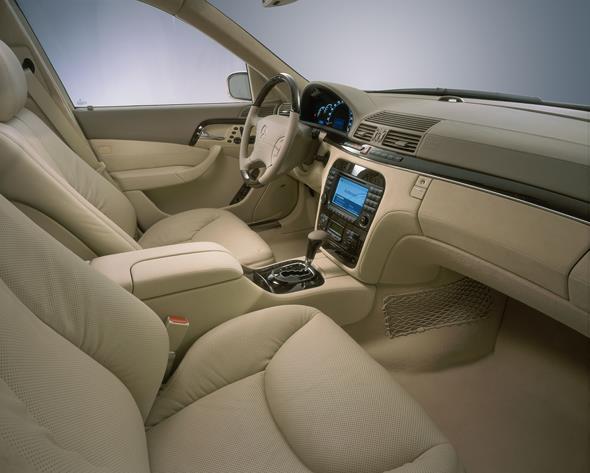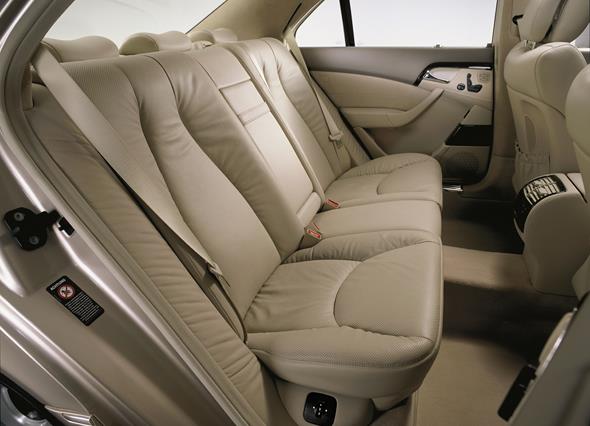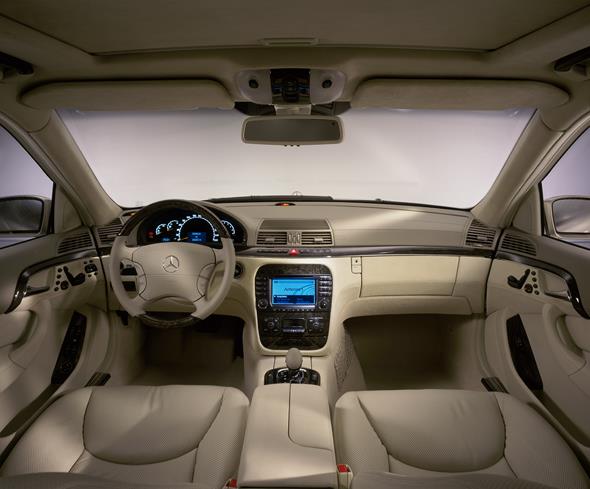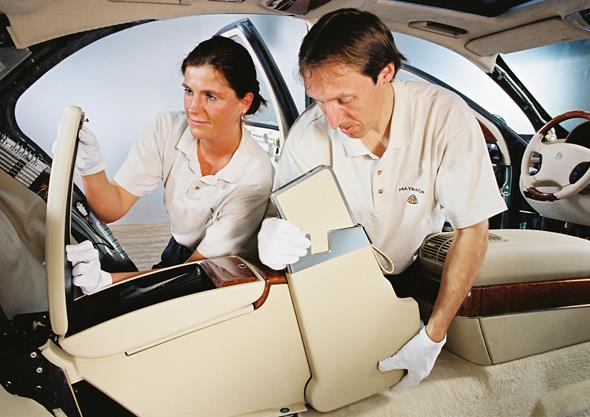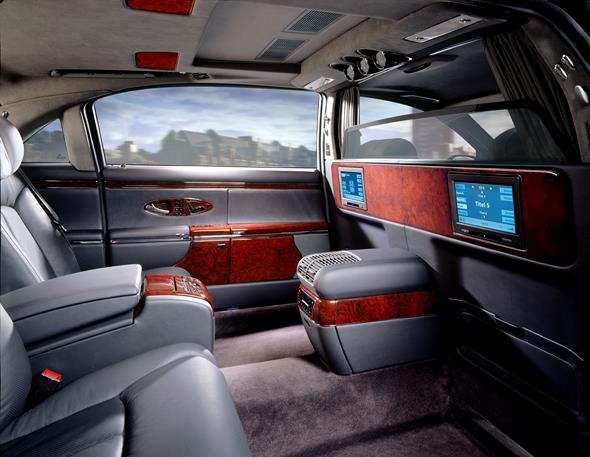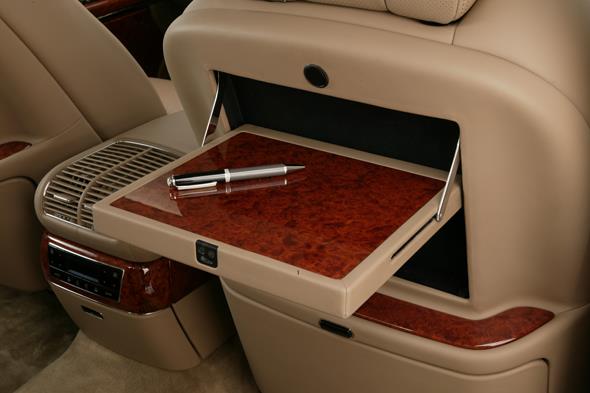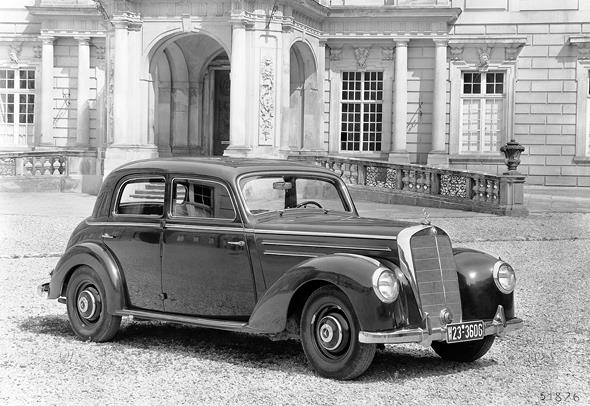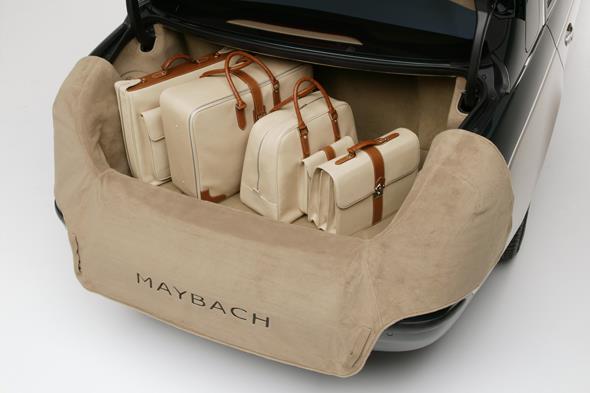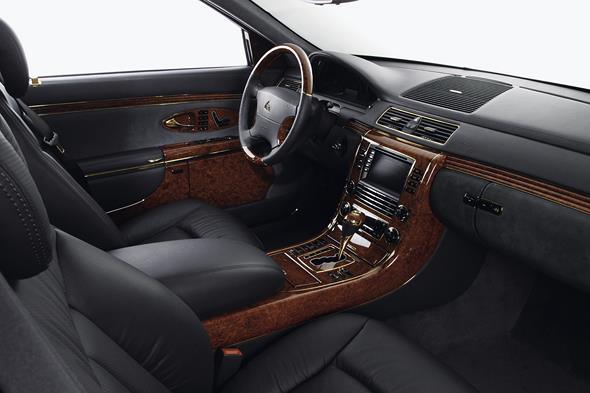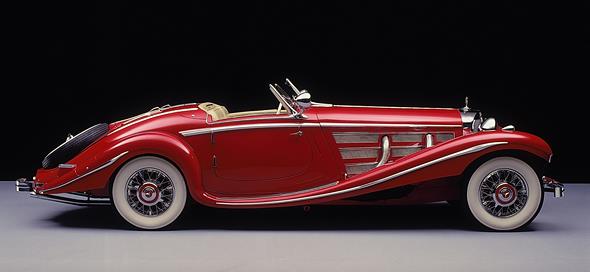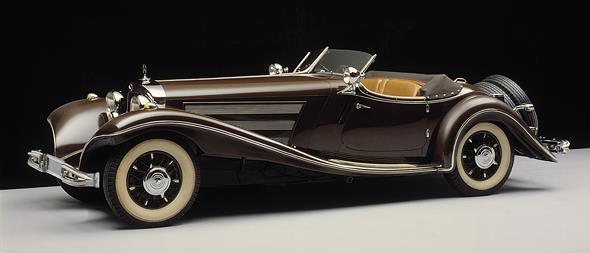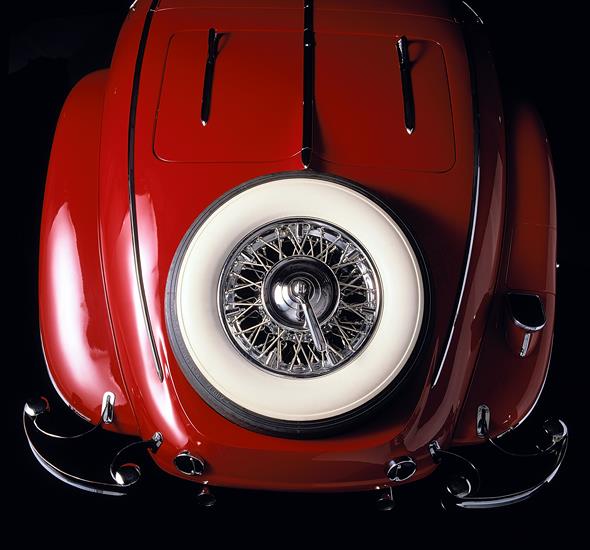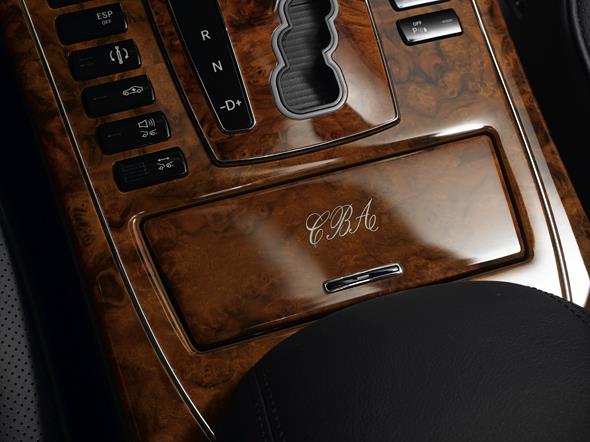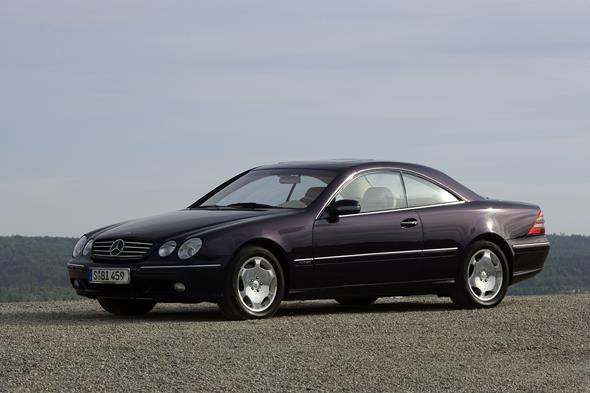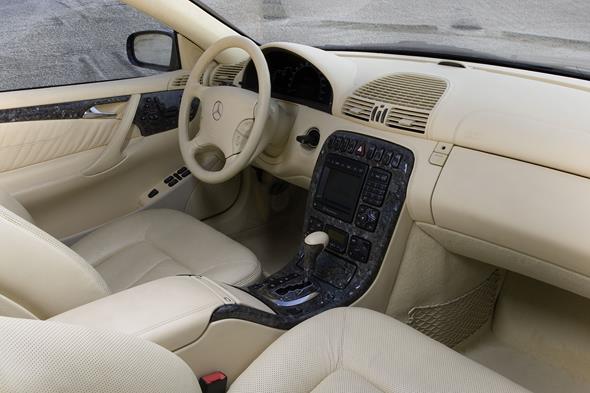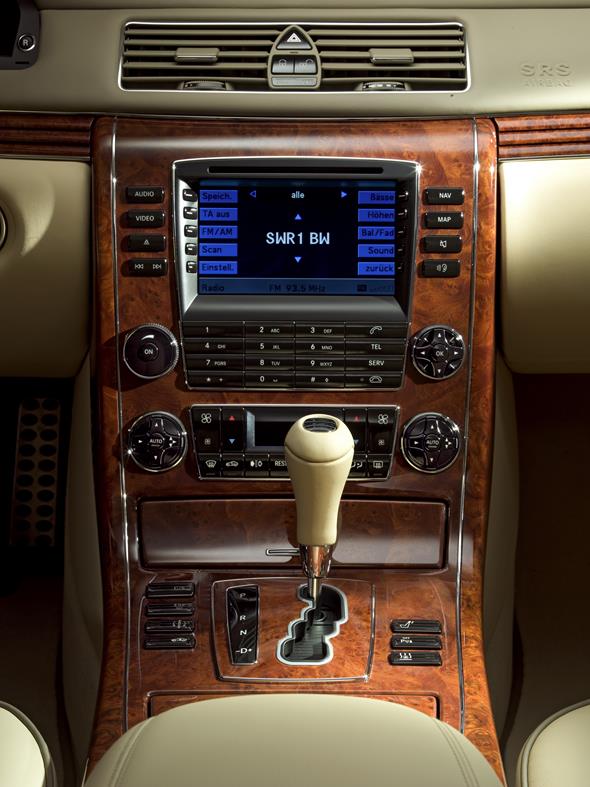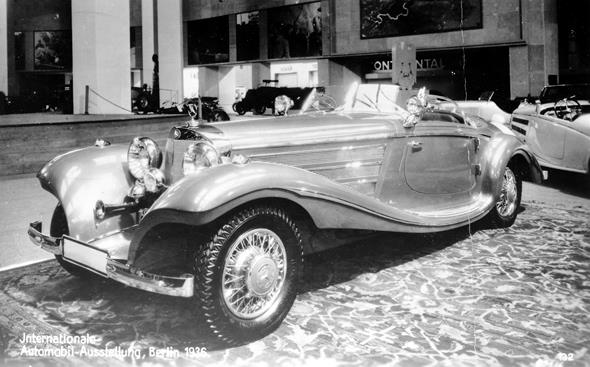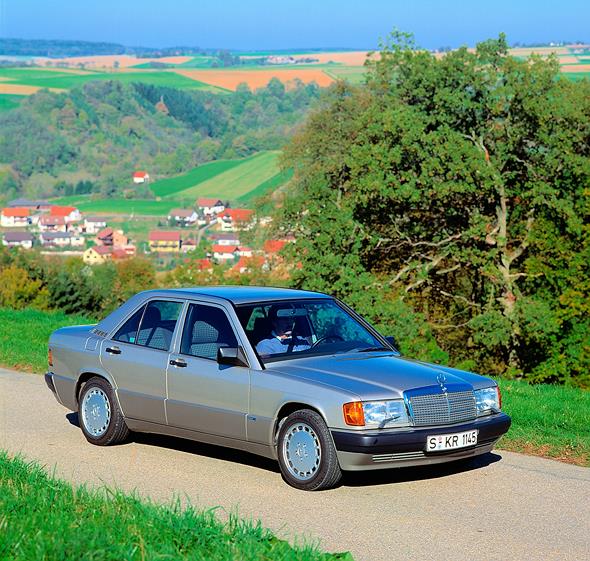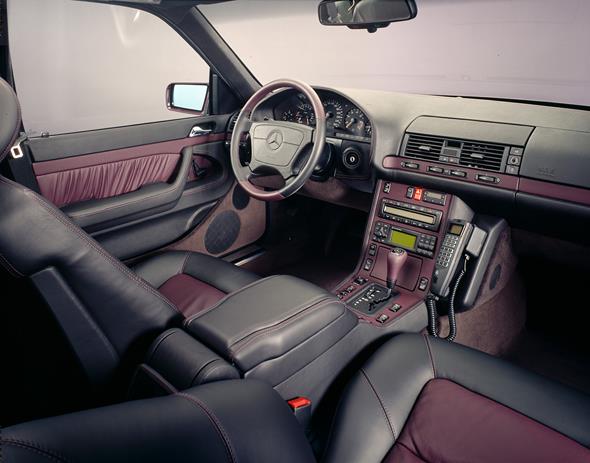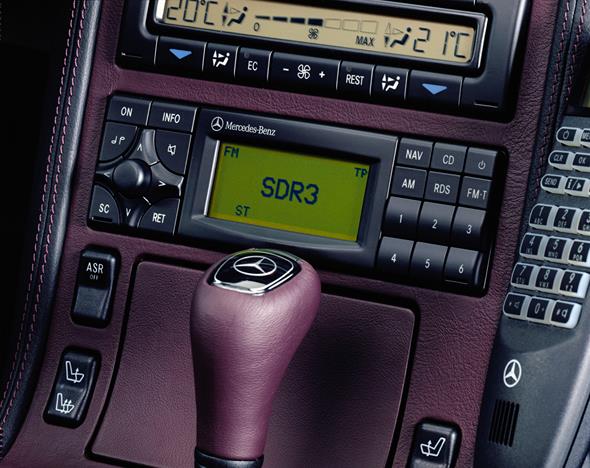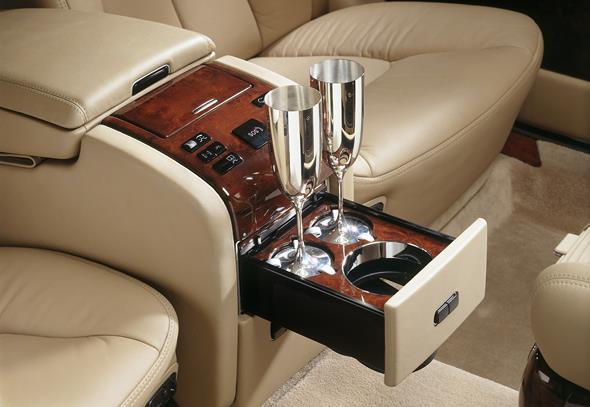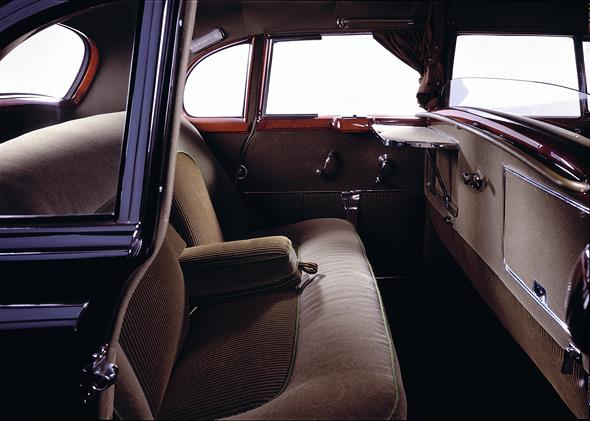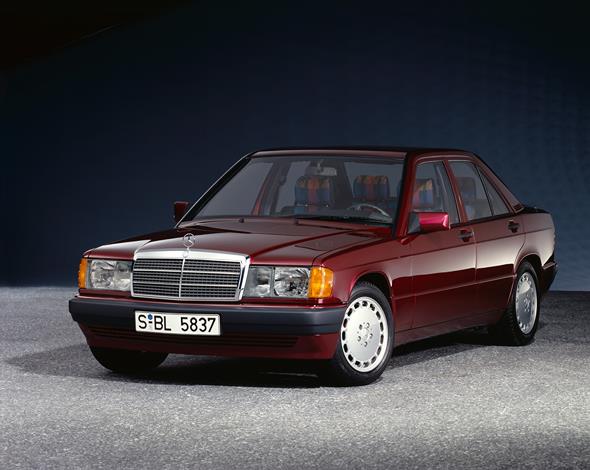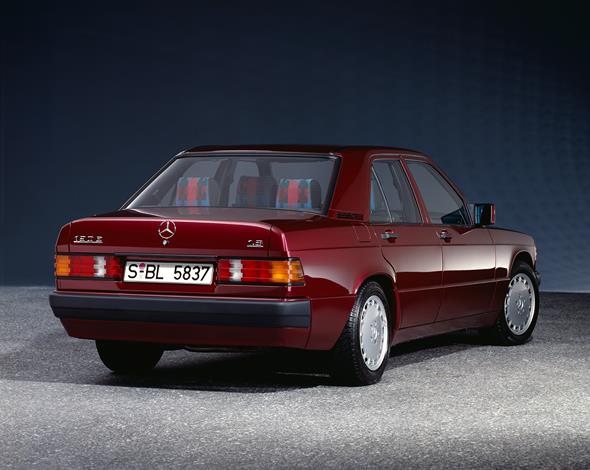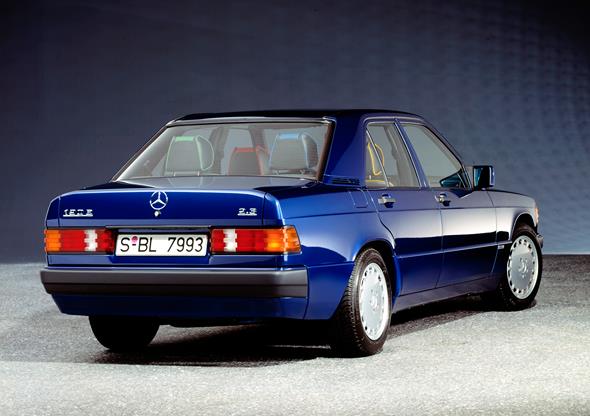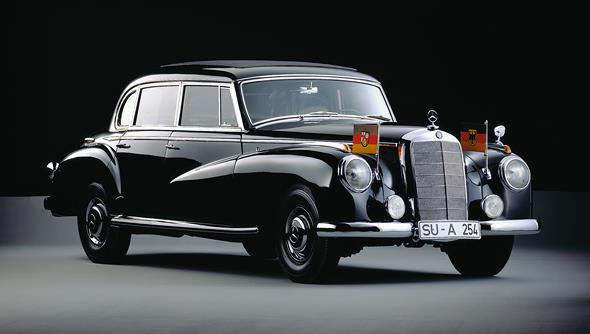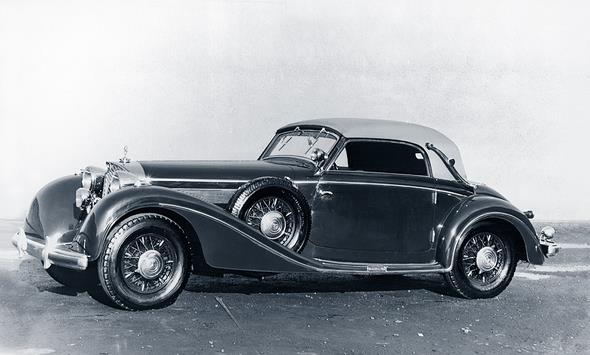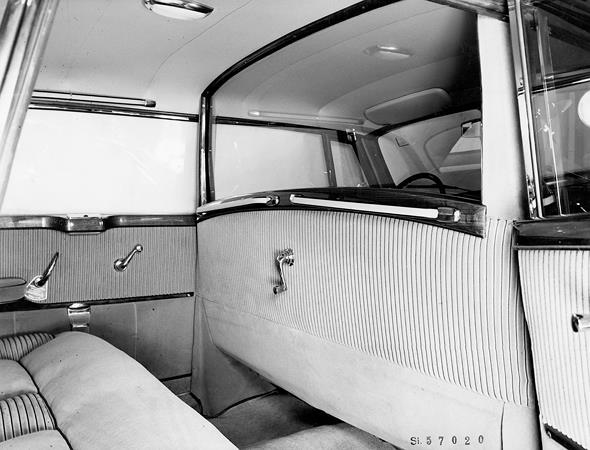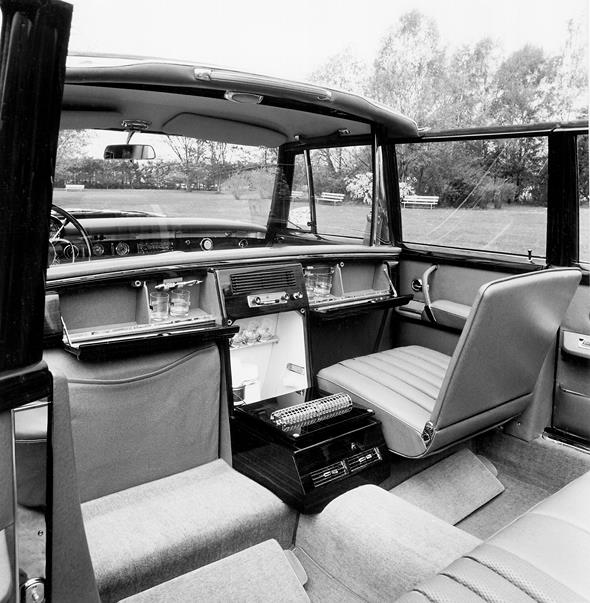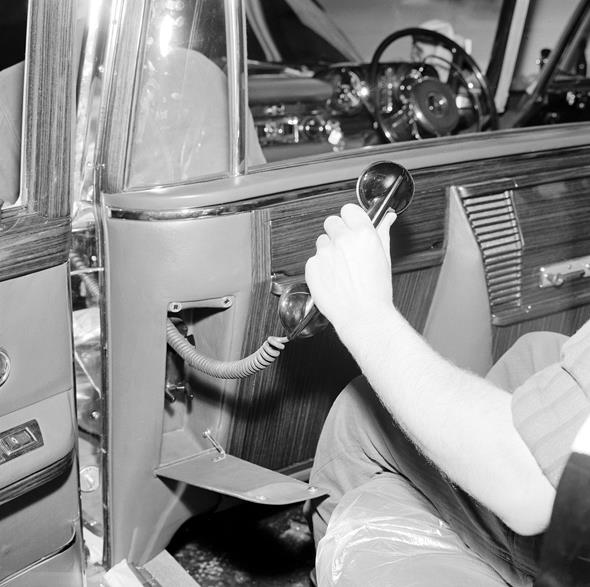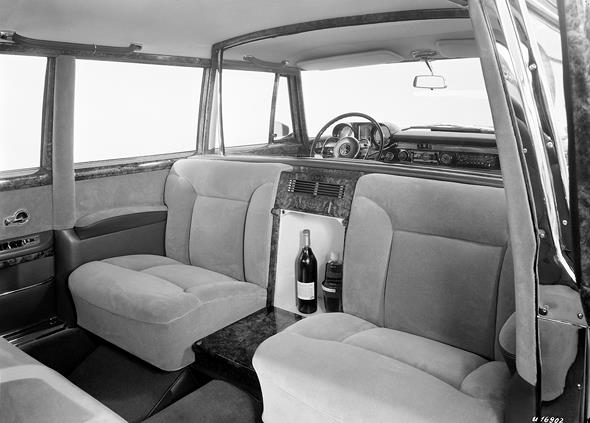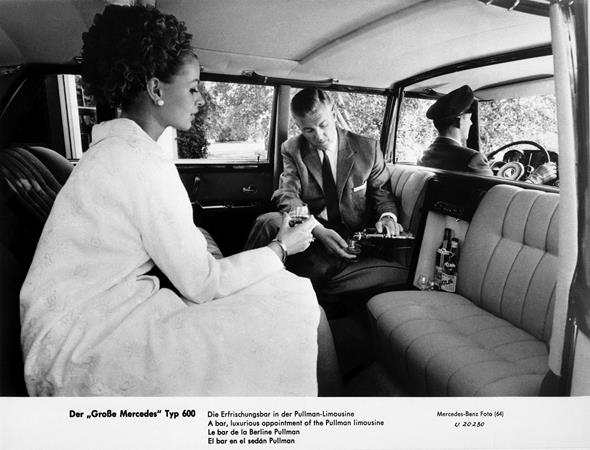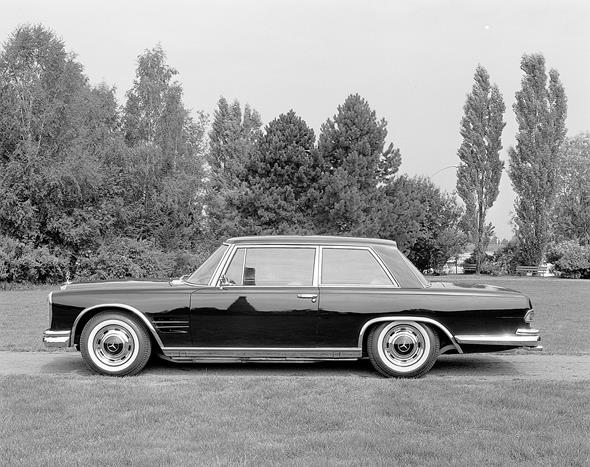

- Individualisation: personal wish fulfilment for all S-Class generations
- designo: character in its most elegant form
- The new S-Class: benchmark for individualists
Stuttgart – The desire for individual equipment detail is a fundamental feature of premium class and flagship Mercedes-Benz vehicles and has been part of S-Class history from the outset. The current range of Mercedes-Benz designo individualisation options enables customers to shape cars in accordance with their personal ideas and wishes. The degree of refinement is determined by innovative ideas and traditional craftsmanship.
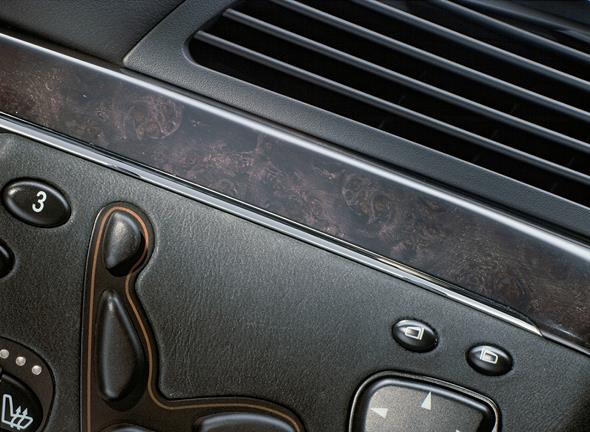
Introduced in 1903, the Mercedes-Simplex 60 hp offered two outstanding body variants – the spartan and sporty look or the highly exclusive version. In the rear of the spacious and luxurious touring car from the private collection of businessman Emil Jellinek, father of the car’s namesake Mercedes Jellinek, passengers sat on comfortable seats covered in specially selected brocade fabric.
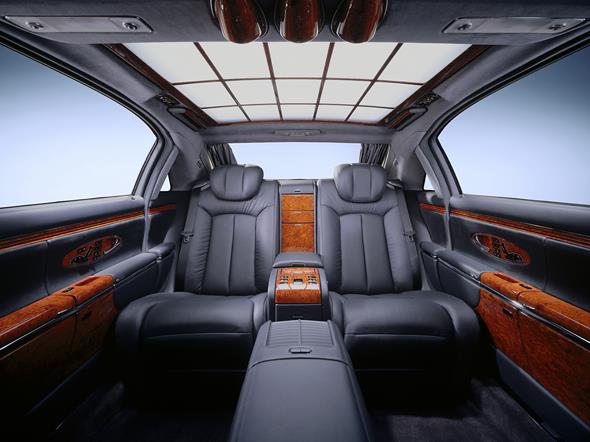
During the early years of the automobile, it was common to adapt vehicles to even the most individual of customer requirements. Even the form and function of the largely handcrafted body structures depended entirely on the taste and personal ambitions of the individual buyer. This remained true of vehicle bodies in particular into the 1930s.
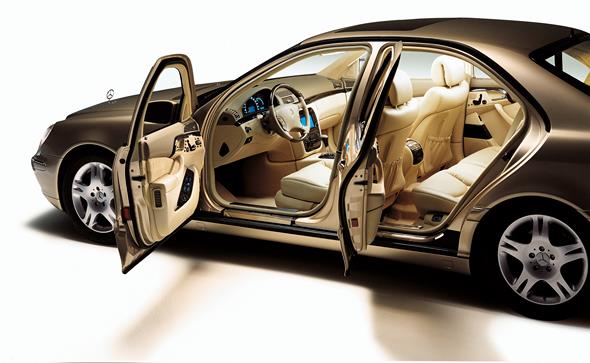
But the start of mass production on assembly lines in the early years of the last century gave rise to a parallel development among many car manufacturers: alongside the mass produced vehicles, they also individually built vehicles with a high degree of customisation.
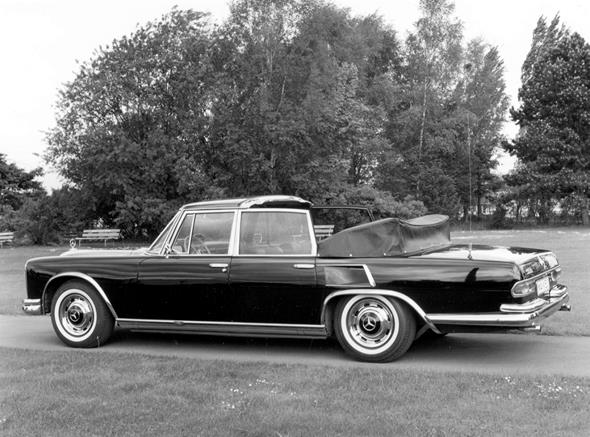
Mercedes-Benz was one such company to organise its production along these lines. With the appointment of Hermann Ahrens, whose expertise in body manufacture combined both design and technological know-how, Daimler-Benz established the special vehicle production facility as an independent department at the Sindelfingen plant in September 1932.

This enabled the company to respond to individual customer requirements more fully than previously. The cars designed and built here during that period still fetch the highest prices at car auctions even today.
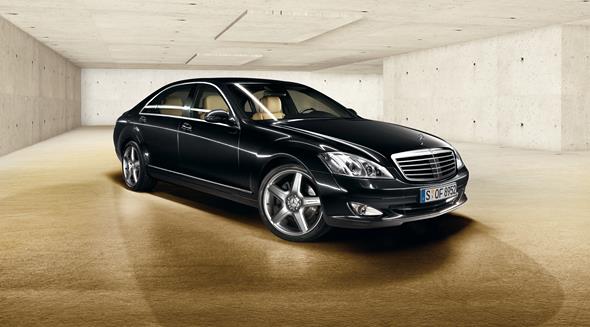
The most outstanding examples of the achievements of the special vehicle production facility and its detailed realisation of customer wishes include the 500 K/540 K (W 29) models, and in particular the Special Roadster, coupés and streamlined models, which continue to set the benchmark for exceptional design and quality today. The department also realised special vehicles for companies and specific professions.
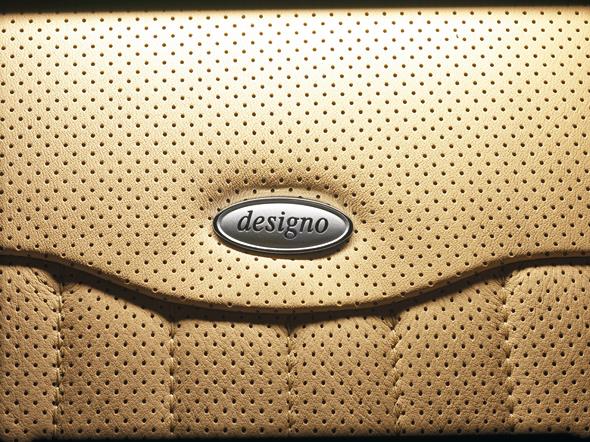
Also individually produced were cars which ranked one level above the premium and luxury class: Mercedes-Benz representational vehicles. Thanks to their status as absolute flagship models, their feeling of luxury and opulent spaciousness, these cars were specially tailored to the needs of VIP customers who harboured a desire or obligation to be represented by their choice of vehicle.
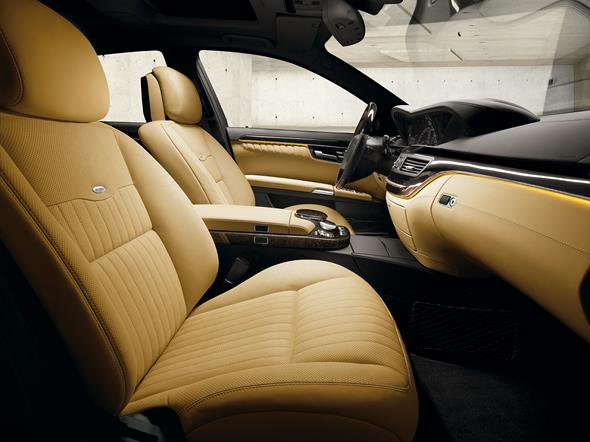
Without question, the Mercedes-Benz 770, the “Grand Mercedes”, introduced at the Paris Motor Show in 1930 and featuring a 7.7-litre eight-cylinder inline engine, belongs to this category.
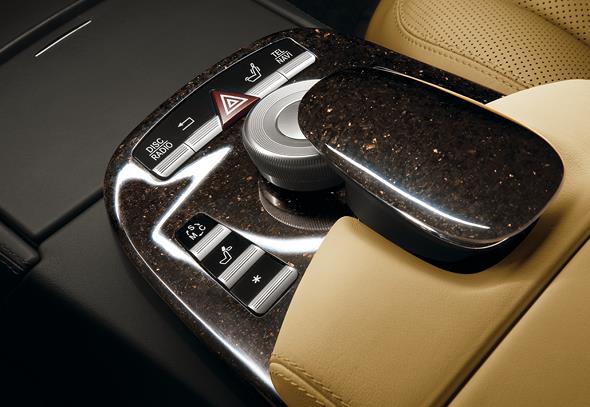
Over 50 colour variants
After the Second World War, when there was limited availability of model variants and even colours, the individual design of automobiles took more of a back seat. From December 1951, Konrad Adenauer, the first Chancellor of the newly formed Federal Republic of Germany, opted to be chauffeured in a black Mercedes-Benz 300 (W 186). The new top-of-the-range model consequently became known popularly as the “Adenauer-Mercedes”.
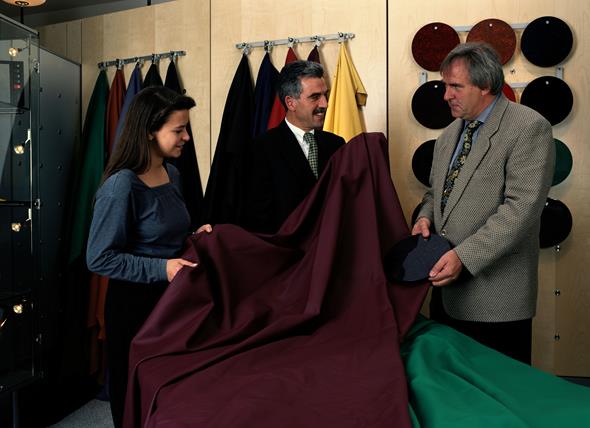
Not long after annual passenger car production volumes at Mercedes-Benz passed the 50,000 mark for the first time in 1955, the company expanded the available colour range to over 50 variants. From this point on, customers were able to select the exterior colour of their Mercedes-Benz from 27 single shades and 26 two-tone paint finishes, thereby differentiating themselves from other road users, despite vastly increased vehicle sales.
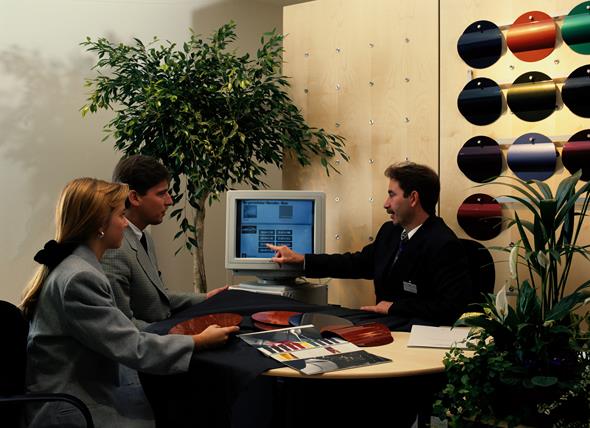
Apart from the special paint finishes, lists of special equipment options were fairly basic, particularly in the early 1950s – business was still shaped by the difficult economic circumstances of the post-war years. The more comfortable Mercedes-Benz premium-class models, such as the 220 (W 187) and 300 (W 186), included such optional extras as leather upholstery, whitewall tyres and two to four-piece luggage sets, all at additional cost.

The “600”: a car of unlimited possibilities
Presented at the Frankfurt International Motor Show (IAA) in 1963, the 600 (W 100) represented a true turning point in the history of individualisation for cars. Even standard equipment in the new top-of-the-range model was unusually comprehensive: the 6.3-litre V8 engine delivered extremely respectable performance and a top speed of over 200 km/h, pneumatic suspension for outstanding ride comfort, an automatic transmission from the company’s in-house production and power steering.
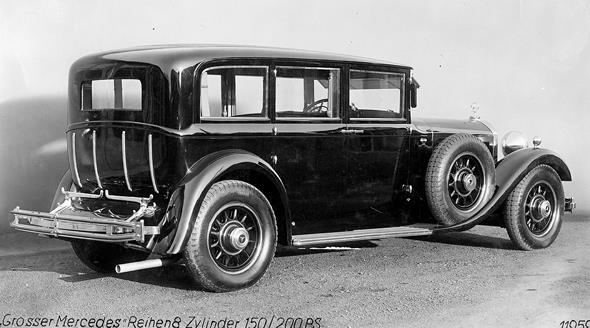
A unique luxury hydraulic system permitted adjustment of the front seats and rear seat bench, opening and closing of car doors, boot lid and the optionally available sunroof, as well as opening and closing of side windows.

When it came to leather upholstery, fabrics, woods, and interior trim, “600’s” customers had a huge range of colours and materials to choose from. Many individual special equipment features made life on board the luxury saloon even more comfortable – and, if required, transformed it into a mobile office.

The possibilities offered at the rear seemed almost infinite: the folding centre armrest was optionally available as a “cosmetics box with Braun Sixtant razor”; other contents were listed as “1 mirror, 1 comb, 2 scent bottles, and electric sockets”.

On account of its dimensions, the transformer required to operate the razor was housed in the boot, well hidden from passengers more accustomed to luxury and aesthetics. This was also where the transmitting and receiving equipment for the optional car telephone were stowed; receiver and mouthpiece came in different designs and could be mounted in a variety of on-board positions.

Television, radio and recording equipment, traditionally with a fine burr walnut trim, was almost always a feature of individualised equipment specifications. Another popular extra among the car’s well-heeled customers was a refrigerated minibar, stylishly named a “refreshments bar” by Mercedes-Benz.

The five- to six-seater version with regular wheelbase was generally ordered by highly demanding private customers; the seven- to eight-seater Pullman version with extended wheelbase and the Landaulet were largely reserved for use as state limousines and representational vehicles.

Each of the 2,677 individually produced Mercedes-Benz 600 vehicles was unique. And yet one of these automotive rarities deserves special mention. For in September 1965, a four-door Pullman Landaulet was built for Pope Paul VI, which boasted several unique features in addition to the centrally positioned, individual seat in the rear for the Holy Father.

Alongside the many options that came with such representational saloons, Mercedes-Benz production vehicles also saw a clear increase in the availability of upholstery and special equipment options.
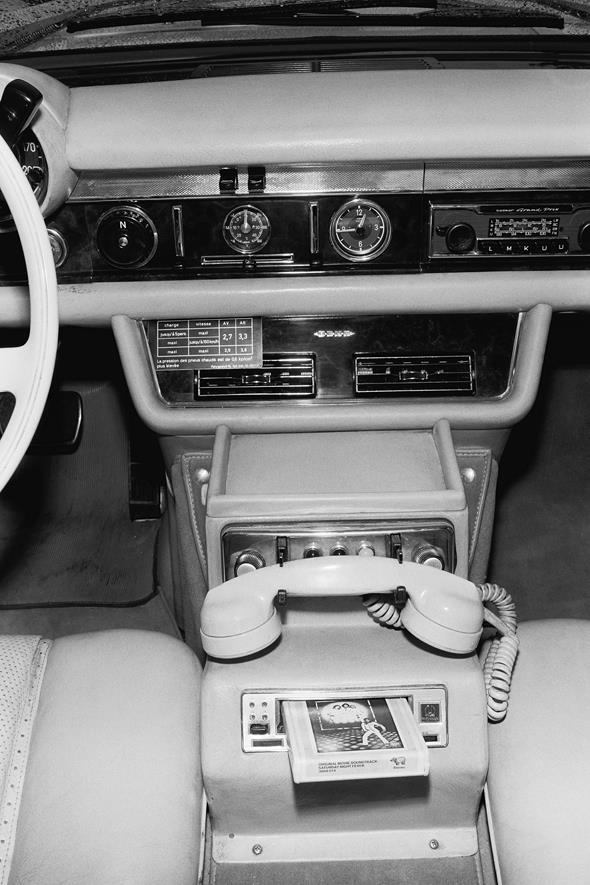
Single- and two-tone paint as well as various metallic finishes were already commonplace from the mid-1950s. Then in 1972, the premium-class saloons from Mercedes-Benz were given their own designation: for the first time, the 116 series bore the proud name S-Class.
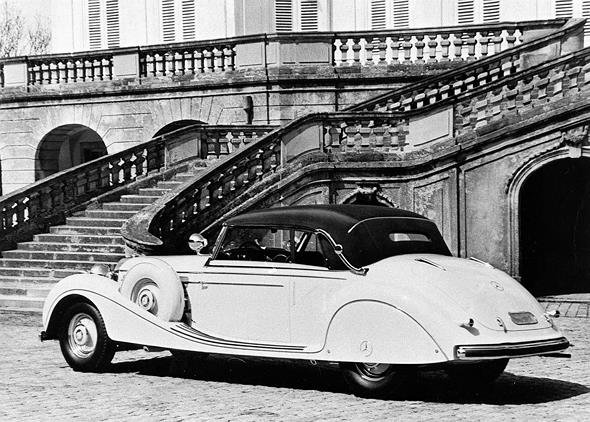
From Sportline and Avantgarde to designo
With its “Sportline” introduced in 1989, Mercedes-Benz launched a new approach to the individualisation of large-volume vehicles. “We can make your Mercedes as sporty as you want” – claimed the slogan that allowed customers to order components individually or combine them with others.
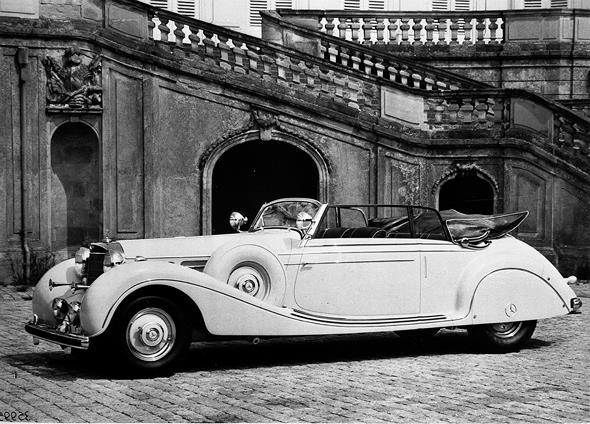
For the 201 and 124 model series there were optional wide sports tyres on light-alloy rims, firmer damping and suspension characteristics, a more direct power steering, a sports steering wheel, sports seats, and suspension lowered by up to 30 millimetres.
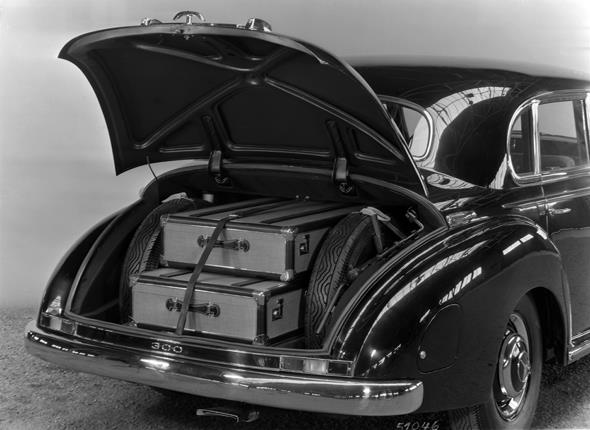
Visually more striking were the three special models “Avantgarde Rosso”, “Avantgarde Azzuro”, and “Avantgarde Verde”, presented by Mercedes-Benz in March 1992, based on the 190 model (W 201).
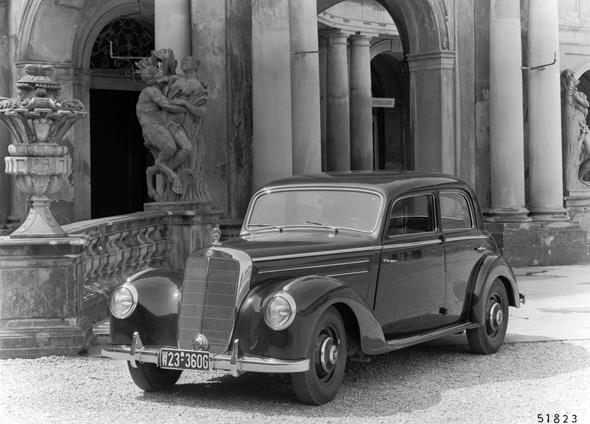
Created by a team of international Mercedes-Benz designers, the models took media and public by surprise with their ingenious design features, fresh and fashionable colours, and fine materials. With the expressive Avantgarde special models, the brand with the three-pointed star achieved a hitherto unparalleled degree of design diversity for large-volume vehicles.
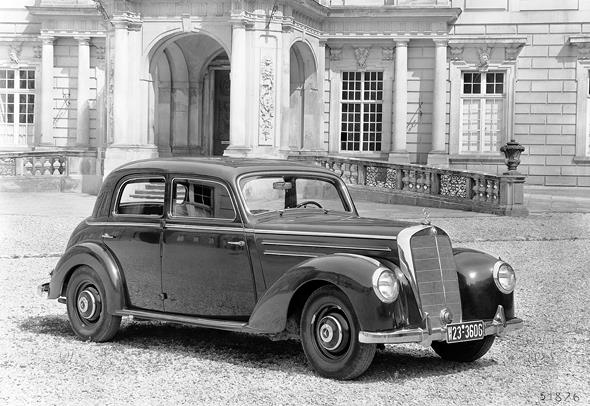
With the premiere of the C-Class (202 model series) in May 1993, Mercedes-Benz began a new chapter of ex-factory individualisation. In addition to the classic version of the new compact class model, it offered three design and equipment lines: “Esprit”, “Elegance”, and “Sport”.
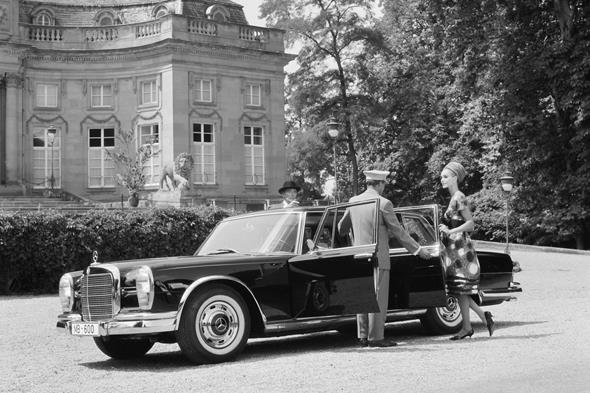
Representing youthful audaciousness, refined elegance and dynamic technology, each line exuded a particular flair – both outside and in. And individual customers could combine the new lines with any engine of their choosing.
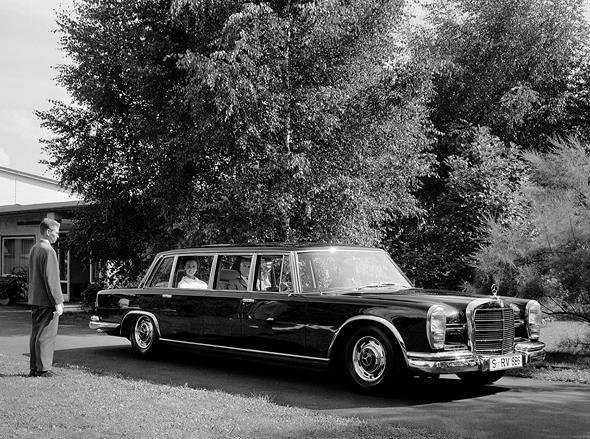
The equipment variants of the various lines, together with the wide range of special equipment and accessories available, gave Mercedes-Benz customers many combination options. And the growing desire for comprehensive individualisation possibilities was not just a feature of the compact class: the demand for personally selected colours and materials was also on the increase in the premium and luxury class.
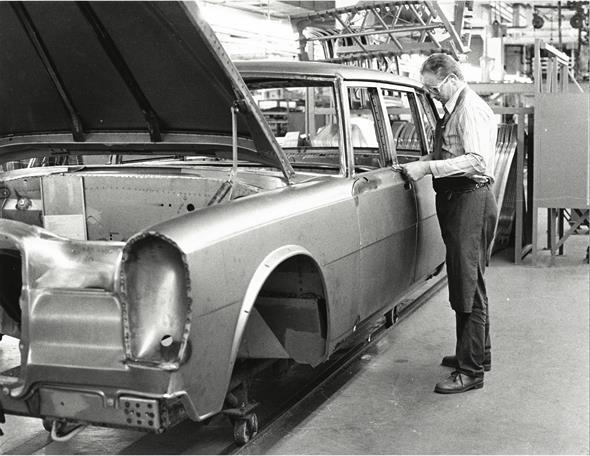
At the IAA International Motor Show in Frankfurt in 1995, the brand took the next logical step: the launch of designo, a comprehensive individualisation programme specifically aligned to the needs of the most demanding of Mercedes-Benz customers. Special colours and special-effect paints, exceptionally soft types of leather and fine trim elements in wood, leather, and carbon fibre: now Mercedes-Benz offered all this ex factory.
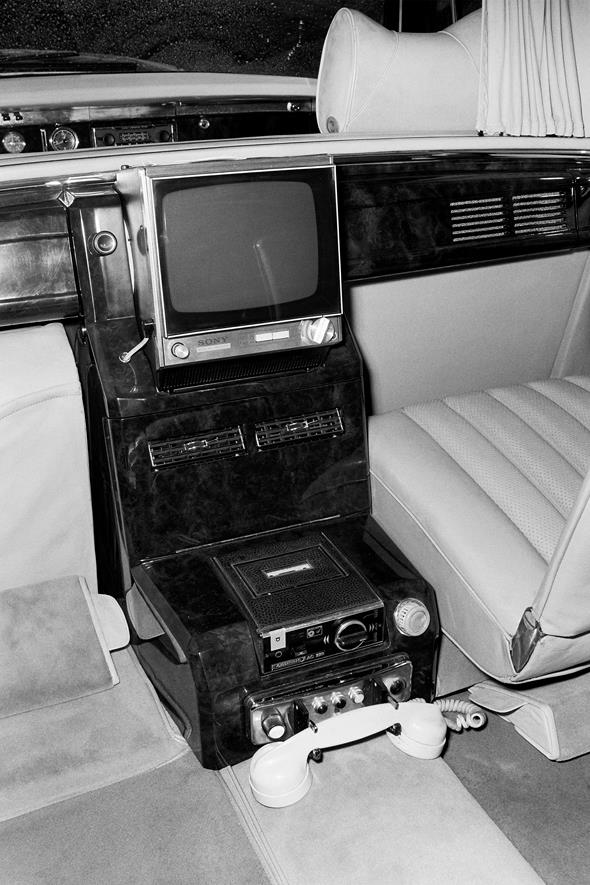
designo centres were opened in many sales and service outlets in order to provide extensive and personal customer advice at the local level. One innovation was an interactive consultation system, which enabled customers to select from the range of materials and colour variants available and combine them in full authentic detail on-screen. With the designo programme, Mercedes-Benz responded to the desire of customers for even greater individuality and exclusivity – across every model series of the brand.
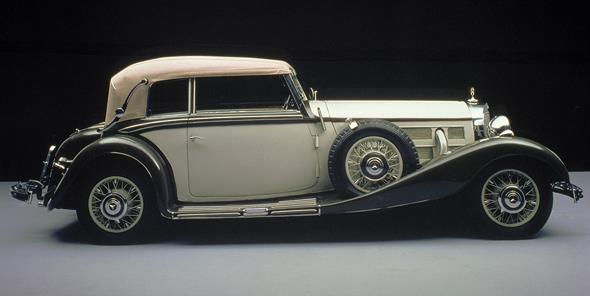
The tailor-made S-Class
From 1998 onwards, customers of the S-Class (220 model series) also benefited from the designo individualisation programme. Special and effect paints, full-grain leather, and trim elements made from a wide range of materials were just the start.
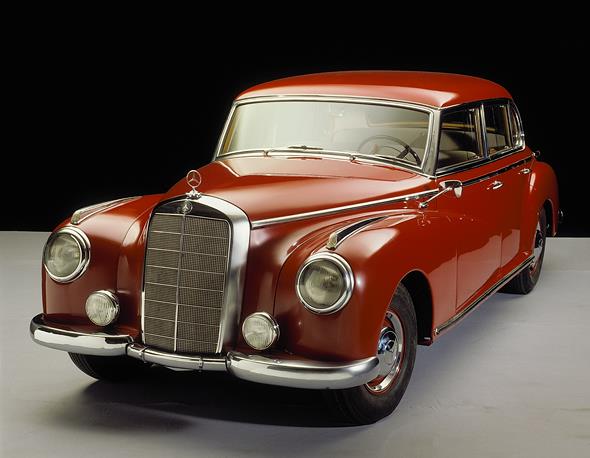
One highly eye-catching option was the liquid crystal polymer (LCP) special-effect paint, later known also as Varicolor: thanks to its liquid crystal polymer structure, the vehicle surface could appear as either a rich metallic green or deep blue, depending on viewing angle.
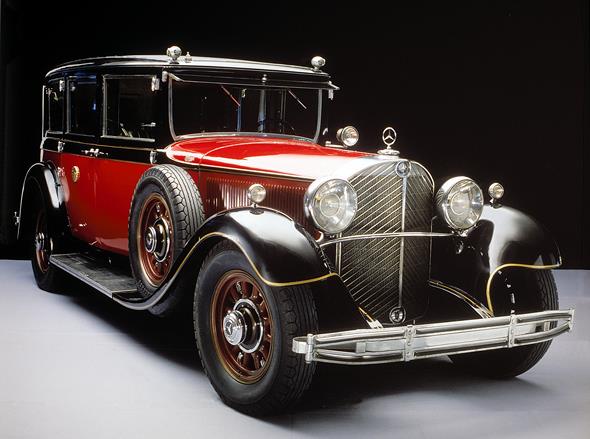
Alternatively, two variants in black, a classic brown or elegant purple underscored the elegant lines of the S-Class. Ocean blue and golden yellow provided special colour highlights.
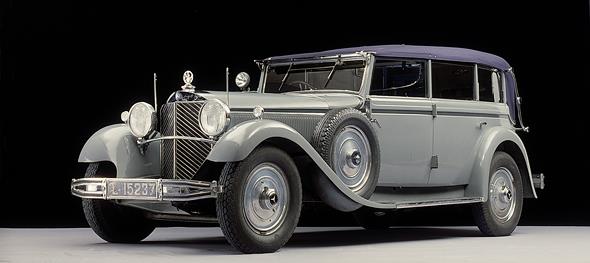
When it came to trim elements in the interior, the creativity of the designers knew virtually no limits. Refined with designo elements, the S-Class interior made use of the finest nappa leather for door linings, steering wheel, and selector lever.
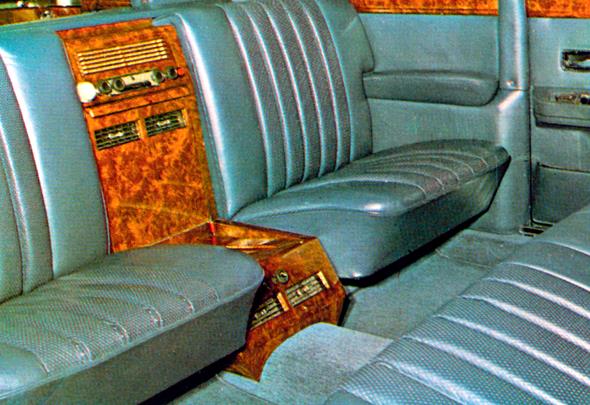
The comfortable seats were meticulously upholstered by hand using designo aniline, a tangibly softer and more breathable type of leather. The exclusive woods for the fine veneers designo curly maple and designo elm were imported from North America and France. All wooden elements were hand-picked and perfectly matched for grain patterns.
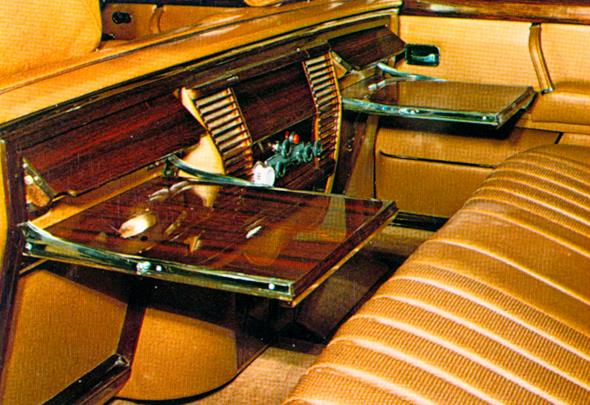
But it was not just exclusive woods that found their way into the interior of the Mercedes-Benz premium and luxury class: with the premiere of the CL-Class (C 215) in 1999, trim elements made of genuine natural stone were offered for the first time.
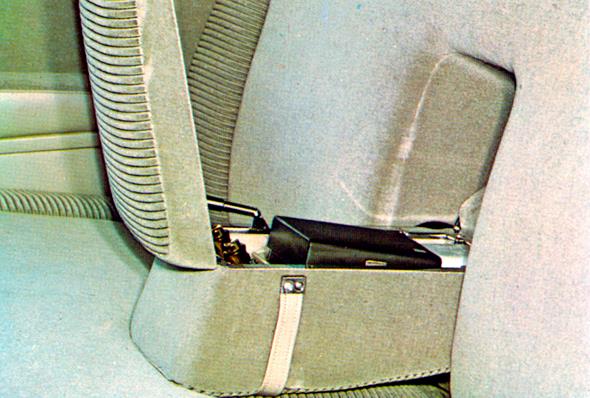
Shimmering blue granite elements for the centre console, door trim, steering wheel rim, and selector lever knob bore the name designo labrador blue pearl. A little later, natural stone was introduced into the S-Class and a second colour was added to the programme: designo star galaxy.
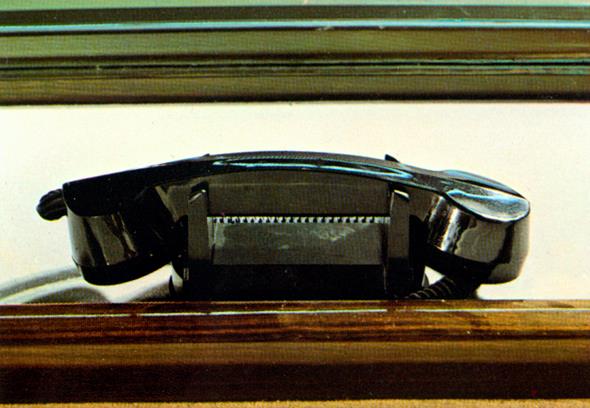
A world apart: special options for the Maybach
The Maybach breathed new life into the tradition of individually tailored high-end luxury saloons. Even at its market launch in 2002, the vehicle offered its customers over two million option combinations in the 62 and 57 Saloons.
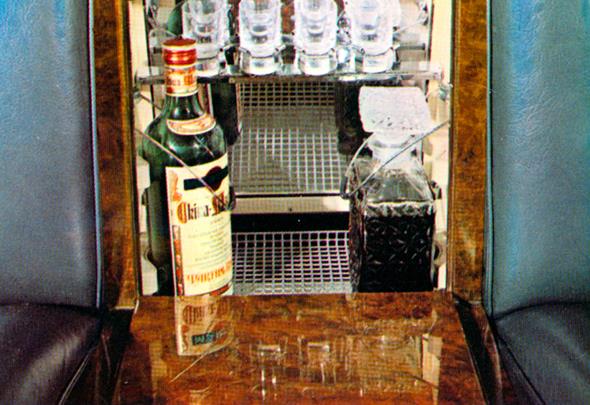
Two years later, the range of ex-factory equipment options was expanded still further: innovations included the tailor-made business package and vehicles specifically configured for use at top hotels. These featured many detailed and technical solutions designed to handle day-to-day hotel operations and frequent changes of passengers.
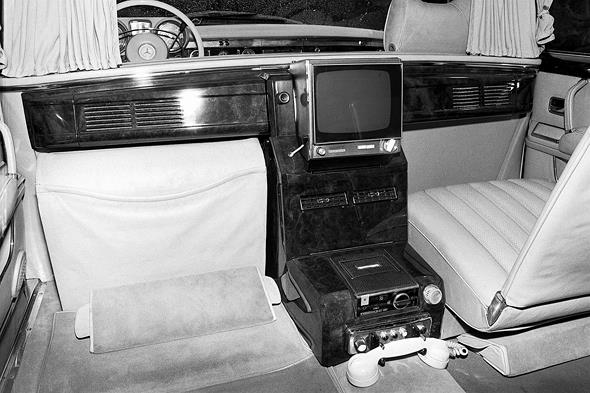
The new S-Class: benchmark for individualists
Every generation of the Mercedes-Benz S-Class has given new meaning to the epithet “the world’s best car”. The same is true of the 222 model series, which celebrates its world premiere in May 2013 and carries forward the legacy of the luxurious premium- and luxury-class saloons from Mercedes-Benz.
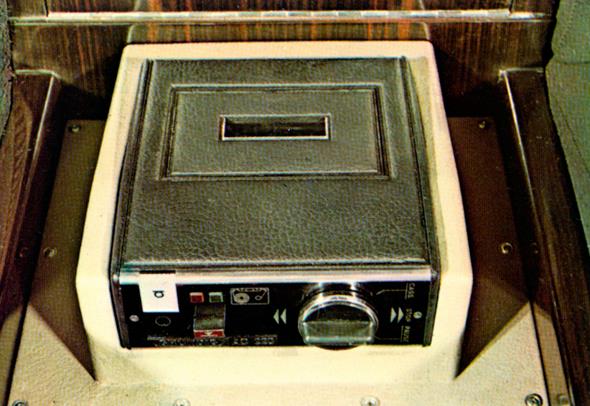
In terms of individualisation, the brand’s top-of-the-range model once again sets new standards. One example is its perfumed interior, since precious fragrances have always been associated with sensual pleasure and individuality.
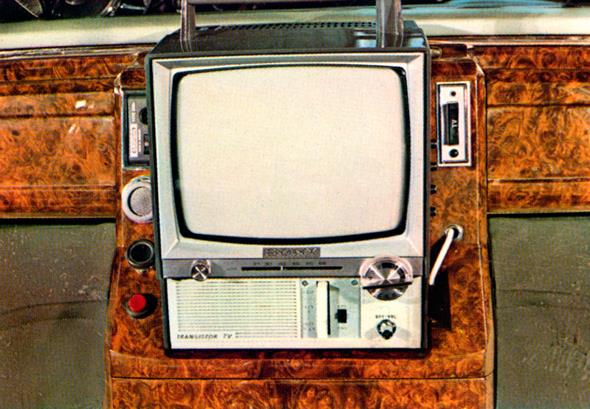
The S-Class of the 222 model series has therefore been equipped with an innovative Active Perfuming System, which allows the driver to select a discrete fragrance for an olfactory experience that appears almost imperceptibly before quickly receding into the background.
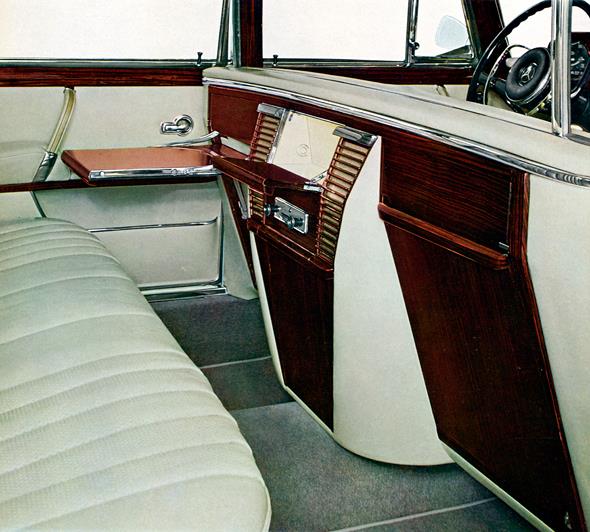
Fulfilling special requirements and creating a car designed entirely to customers’ needs is very much what the premium- and luxury-class models from Mercedes-Benz stand for, notwithstanding traditional values such as comfort, design, and safety. The S-Class from Mercedes-Benz – synonymous from the very beginning with excellence in every discipline.
